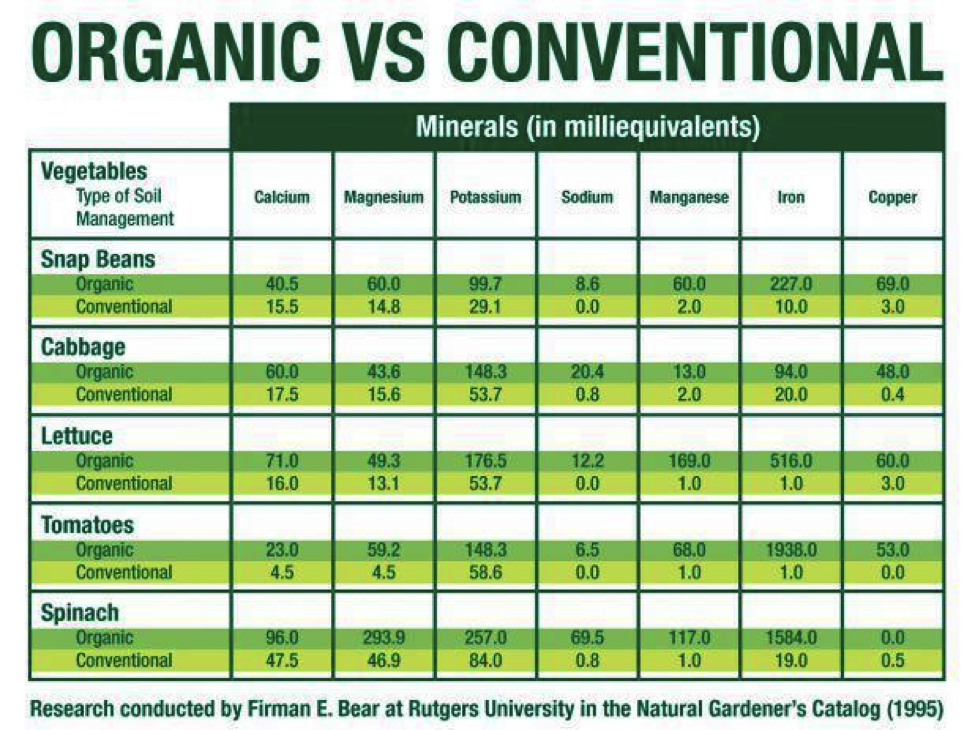Chemical Exposure
Many of the materials used on our crops are controversial – they have been disallowed, banned or never permitted for use in other countries around the world. The plants absorb the chemicals in fertilizers and pesticides linger on their skin. Then we eat these chemicals along with the produce.
The Environmental Protection Agency (EPA) and the US Department of Health and Human Services have reviewed the toxicity of 25 of the most commonly used agricultural pesticides. They have determined that:
-
5 are toxic to the nervous system.
-
18 are harmful to the skin, eyes and lungs.
-
About half are comprised of cancer-causing chemicals.
-
17 cause genetic damage.
-
10 are harmful to reproductive organs.
-
6 disrupt normal functions of hormones.
These chemical pesticides and herbicides have been linked to diabetes, ADHD, birth defects, allergies and other behavioral problems.
The chemicals then linger in our soil for the next crop to absorb. This can cause electrolyte imbalances, chemical toxin buildup, and eventually erosion to occur affecting the next generation of plants.
They also make their way into our drinking water. The Environmental Working Group has tested tap water for pesticide and herbicide levels in agricultural areas of the U.S. and discovered widespread contamination. The levels exceeded federal lifetime health standards in just a few weeks or months of exposure. The EPA estimates that pesticides pollute drinking sources for half of the American population.
Nutrient Value
Farming methods have a huge impact on the nutrient content in produce. There are many studies from different independent organizations that show organic food is higher in nutrients than foods grown with conventional practices. This includes higher levels of vitamin C, antioxidants, iron, chromium and magnesium. Did you know that some commercially grown oranges have very little Vitamin C?
Conventional farming changes the make-up of the soil used for the next generation crop, which then impacts the nutrient density of future crops.

Taste
Taste may be subjective, but I believe that organic food tastes better. I think that our taste buds pick up the better nutrient profile, registering as better richer flavors. Conventional produce is subject to nitric fertilizer to speed up the growing rate. Organic produce is not, allowing it to grow more slowly and lets the flavors develop naturally. There’s also more dry matter (less water) in organic produce.
What can you do?
Just being aware of the problem is the first step. Start incorporating organic produce in your life and it will help reduce the pollution in our drinking water, preserve soil quality and improve your health.
The Environmental Working Group has a guide to help you determine which foods contain the most chemicals. If the produce is on their Dirty Dozen (most contaminated crops) list, you can buy organic. If the produce is on their Clean Fifteen (least contaminated) list, you can buy conventional.
Dirty Dozen
-
strawberries
-
spinach
-
nectarines
-
apples
-
grapes
-
peaches
-
cherries
-
pears
-
tomatoes
-
celery
-
potatoes
-
sweet bell peppers
*hot peppers
https://www.ewg.org/foodnews/dirty-dozen.php
Clean Fifteen
-
avocados
-
sweet corn*
-
pineapples
-
cabbages
-
onions
-
sweet peas frozen
-
papayas*
-
asparagus
-
mangoes
-
eggplants
-
honeydew melons
-
kiwis
-
cantaloupes
-
caulifower
-
broccoli
* a small amount of sweet corn and papaya in the United States is produced from genetically modified seeds. Buy organic varieties if you want to avoid genetically modified produce.
https://www.ewg.org/foodnews/clean-fifteen.php
Other ideas to consider:
-
Think variety. Eat a diverse range of plants and animals. Today, most people get 60% of calories from just 3 foods: corn, wheat and soy.
-
Think locally. Eat foods sourced as close to home as possible so that is fresher and hasn’t lost nutrients. It also supports local farmers and reduces emissions.
-
Think seasonally. Eat foods in season where you live. Fruits, for example, are not meant to be eaten all year.





